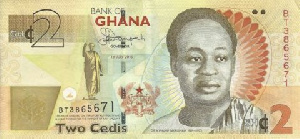Surge in gold prices could be bad news for oil

The world may soon return to an international gold standard thanks to a project that European central banks have been quietly preparing for decades.
This month Seeking Alpha reported that “since the 1970s, policies that paved the way for an equitable and durable monetary system have gradually been implemented,” leading us closer and closer to being able to reinstate the classic gold standard. The European Central banks predicted 50 years ago what is happening today in the international monetary system–the current fiat system is on the decline, and “unconventional monetary policy has entered a dead end street and can’t reverse” Jan Nieuwenhuijs wrote for Seeking Alpha.
The international gold standard disappeared for good in 1971–around the same time that the European Central banks started working on a contingency plan to bring it back eventually, if and when it would be needed.
“Sentiment in Europe, however, was to counter dollar dominance and slowly prepare a new arrangement,” Nieuwenhuijs writes. “Currently, central banks in Europe are signaling that a new system that incorporates gold is approaching.”
As such, Europe has “equalized official gold reserves internationally, strategically allocated their gold, upgraded their gold to current industry standards, and are now promoting gold as the ‘perfect piggybank’ and as ‘protection against high inflation.’” And the movement to buck dollar hegemony is not limited to Europe. Officials in Malaysia and the president of the Shanghai Gold Exchange (SGE) have also publicly advocated moving away from the U.S. Dollar and back to gold.
Now, the revitalization of and renewed faith in the gold standard seems to have spread to the energy sector as well. Analysts at Morgan Stanley have said that they think that the ratio between two of the most watched commodities on Earth–oil and gold–is “worth highlighting,” remarking that this golden ratio (so to speak) could or should be of interest to those looking for a crystal ball for oil price futures.
However, Morgan Stanley hedges this assertion, saying that these practices certainly have their failings as well. “The oil-gold ratio has historically been a poor indicator of future oil prices,” Morgan Stanley’s Martijn Rats and Amy Sergeant stated in a company research note last week.
“However, it is interesting at its extremes.”
As explained by CNBC, “crude futures tend to be supported during periods of high inflation, while gold is traditionally used as a hedge against inflation. This positive correlation has often meant higher oil prices have coincided with higher gold prices, although one does not directly impact the other.” the ratio between oil and gold becomes useful when determining how many barrels of oil are equivalent to the value of an ounce of gold.
Oil has been having a historically bad year. After oil demand took a severe hit from the spread of the novel coronavirus, the oil sector’s woes were compounded by a spat, which soon turned into an all-out price war, between the OPEC+ countries of Russia and Saudi Arabia. The result was a massive oil glut that soon filled the world’s oil storage to max capacity, to the extent that storing oil became more expensive than owning it, causing the West Texas Intermediate crude benchmark to plunge below zero for the first time in history on April 20th, ending the day at a previously unthinkable negative $37.63 per barrel.
While the international Brent crude benchmark never went into negative territory, it’s had a rough year as well. “At present, international benchmark Brent crude futures are down more than 35% year-to-date, on pace for their worst year since 2015,” reports CNBC.
“In stark contrast, spot gold futures are trading up over 19% this year, on track for their best year since 2010.” Because of this, “the U.S. bank said the oil-gold ratio was currently trading in its 99th percentile since 1980, despite recovering from a more than 40-year low in late April.”
Source: Laud Business





